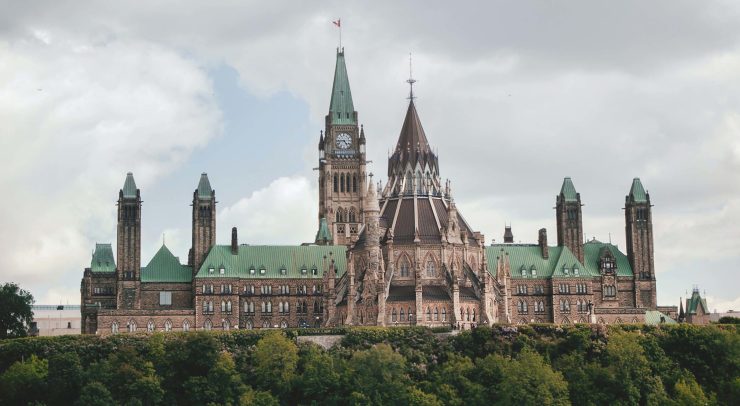The Fulcrum: Could vacant office buildings be part of the solution to Ottawa’s housing emergency?
Posted October 26, 2021
Posted October 26, 2021
OTTAWA’S WAITLIST FOR AFFORDABLE HOUSING TOPS 12,000
With many workers and workplaces opting to continue to work from home as COVID-19 restrictions continue to be lifted, office spaces in the downtown cores of Canadian cities are experiencing heightened rates of vacancy. Precedents have been set across the country to refit these spaces and convert them for alternative uses, including urban farming, coworking spaces, and housing.
In light of the pandemic, local waitlists for affordable housing are the highest they’ve ever been in Ottawa.
“Right before COVID-19 hit, the City [of Ottawa] declared a housing and homelessness emergency, yet we still have over 12,000 households on the waitlist for social housing,” wrote Bader Abu-Zahra in a statement to the Fulcrum.
Abu-Zahra is chair of the Ottawa-Vanier chapter of ACORN, a local and national community organization of low income and working class people that advocates for social and economic justice. He believes that vacant office spaces offer an opportunity to create affordable housing and reduce the length of waitlists.
“The City of Ottawa should use every tool available to address the housing and homelessness crisis,” said Abu-Zahra. “Using vacant buildings for affordable housing is an obvious solution, however, it will not be a silver bullet. The City must do everything it can to create more affordable housing but also preserve the affordable housing we do have that is being lost every single day to renovictions and redevelopment.”
ACORN’s ongoing campaigns in Ottawa/Gatineau seek to defend stable housing for low income and working class people by implementing anti-displacement policies, inclusionary zoning, and creating a tenant defense fund, among other initiatives.
While repurposing vacant buildings may not be the whole solution, Abu-Zahra believes that it serves as a promising start. However, it is not without its challenges.
“This isn’t just, ‘Oh, look at taking this empty office space. We’ll throw up a couple of walls and presto, we’ve got an apartment.’ There’s a lot of work that’s involved in thinking it through,” said Toon Dreessen.
Dreessen is an architect, the president of Ottawa architectural practice Architects DCA, and the former president of the Ontario Association of Architects (OAA). While he agreed on the conversion of former office buildings into residential spaces is possible, he said the challenges are significant.
Dreessen explained commercial floor plates do not often lend themselves easily to residential spaces. An office building differs in many important ways from a residential building, including in terms of ventilation, soundproofing, plumbing, and general layout. These features cannot be refitted to be suitable for apartment-style living without significant structural changes to the building.
That said, Dressen believes there remains a feasible approach to refitting commercial spaces for residential uses.
“There are some that you could absolutely turn into housing. And this is where every building is different, and every building is unique,” he said.
Dreessen calls hotels a “low hanging fruit” in the context of this type of conversion, since they’re already residential in nature and therefore outfitted for residential use. In terms of commercial spaces, he thinks vacancy provides the opportunity for older buildings to receive much needed updates.
“In office buildings. I think the real opportunity that’s in front of us is to take some of these older office buildings and actually strip them back to the bare structure and potentially even use this as an opportunity to replace the exterior, the cladding, the insulation, and really do a really deep reset. Let this be an opportunity to get rid of asbestos, paint, all kinds of other stuff that’s a legacy from the middle of the century, and reinsulate and redo them in a proper way and get a really highly sustainable building.”
Dreessen, also a writer, public speaker, and activist for inclusive spaces, believes that despite these challenges, the vacancy of these spaces provides an opportunity for innovative solutions and better buildings.
“I think that’s where we need to be really thinking about, ‘how do we get the best value out of some of this existing building stock?’ And what is the building? What does it look like? How can we make it not only a continued part of our cultural legacy, but also a part of our solution in climate change, and part of our solution in tackling the housing crisis — other things that we could use these buildings for.”
As the pandemic is not yet in the past, the City of Ottawa’s director of housing Saide Sayah told the Fulcrum “the future demand and potential conversion of office space in Ottawa on a larger scale is unknown.”
“Housing Services has previously accommodated conversion from office spaces and other uses through the City’s funding programs for affordable housing. However, while we have seen a few conversions from office space to residential housing in the private market, it is too early to determine the demand for conversion of Ottawa’s office-use real estate holdings to residential space due to the pandemic,” wrote Sayah.
Sayah added that “the City has not been approached by, nor found, any property owners of office buildings interested in converting or selling their buildings at this time.”
***
Article by Zoë Mason for the Fulcrum

